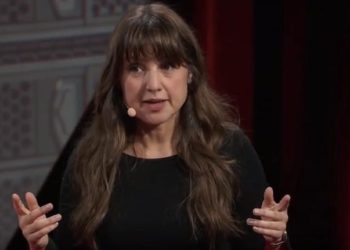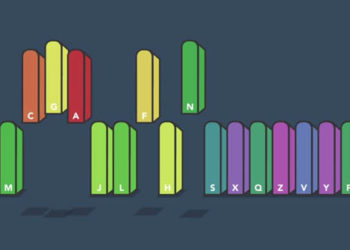Every new technology poses challenges for the concept of intellectual property rights ownership. When copyright was first introduced into legislation in the US following the adoption of the Constitution, the copyright of works extended to “maps, charts, and books” and only for a period of 14 years. Growth of the coverage of copyright over time moved forward in fits and starts, occasionally with the not-so-subtle hand of the Supreme Court in the United States. A perfect example of this extension of copyright was the inclusion of photography in the late 19th Century. When first developed, people viewed the output of a photograph to simply be a chemical process, lacking the originality of activities like painting, and therefore not copyrightable. This was upended in the 1884 Supreme Court decision Burrow-Giles Lithographic Co. v. Sarony, which held that in fact photographs “that are a representation of an author’s original intellectual conceptions” may be afforded protections under copyright.

Last week, the Copyright Office together with WIPO hosted a meeting on Copyright in the Age of Artificial Intelligence. The meeting drew a high-powered roster of speakers and panelists including Francis Gurry, Director General of WIPO; Maria Strong, Acting U.S. Register of Copyright; Andrei Iancu, Director of the U.S. Patent and Trademark Office; Mary Rasenberger, Authors Guild Executive Director; David Hughes, CTO at RIAA; and Ros Lynch, Director of Copyright & IP Enforcement at the U.K. Intellectual Property Office (UKIPO); among many others. This was the second meeting hosted by WIPO and the Copyright Office, with the first being held in Geneva last fall. The two meetings are being held in conjunction with a public consultation that WIPO is conducting to seek input on policy issues related to artificial intelligence and intellectual property rights. The draft paper is “designed to help define the most-pressing questions likely to face IP policy makers” at the convergence of AI and intellectual property issues. The deadline for input on the draft paper is on Friday, February 14, 2020.
There are many interesting threads in this discussion. The first comes in the form of the process of creating and training an artificial-intelligent-like system. The overwhelming majority of the current AI systems need to be trained on real-world information as input data to get the AI to recognize patterns and discern an approach to a problem. Whether, and if so how, should the content — much of which is under copyright — be recognized for its role in training the AI? Could the training of the AI be considered a transformative work in the world of intellectual property? Some people during the day’s discussions viewed the use of content by a machine more similar to reading by humans, while others thought of the process more similar to the type of sampling most common in hip-hop music. In that context, they asked if there were some way to track a novel creation back to some element of the original input file.
This seems to me to fundamentally misunderstand the technology of machine learning, and what makes these questions more fraught. In the most novel of cases, machine learning algorithms do not simply regurgitate the best compilation of the input, but instead generate a new outcome based on the training. Some have argued that by exposing the AI to the world of content to derive new approaches is most like how humans are exposed to art, reading, and cultural styles in developing their own voices. Some are concerned that machine reading is simply a way to ingest and utilize authors’ works without due compensation, particularly as the machine is generating new works based on original works. One example of this discussed during the forum was the work of the Next Rembrandt Project. This effort, led by Microsoft, ING, and TU Delft, Mauritshuis, and Museum Het Rembrandthuis sought to create a new three-dimensional painting based on a thorough AI analysis of dozens of Rembrandt’s original works. One speaker compared the work of the AI in this case to that of a forger. If so, is that a work we want to privilege with copyright protections, though it should be noted that forgeries are still works in their own right and do get the benefits of copyright.
Another interesting thread has precedent from an odd direction, with an argument that derived from the now famous monkey selfie. In 2011, a nature photographer left his camera on a tripod and an endangered Celebes crested macaques, intrigued by its reflection in the lens snapped perhaps hundreds of pictures of itself. One of those photos ended up promoted by the photographer and it ended up in the British press. Other sites, such as Wikipedia and Techdirt reproduced the photo on their sites, that the photographer and PETA eventually perused in court to seek compensation as violation of copyright. Whether the photographer could assert copyright in the photograph was eventually dismissed by the Ninth Circuit court of appeals in 2018.
In the Copyright Office’s Compendium of U.S. Copyright Office Practices, released on 22 December, 2014, the Office stated that, “only works created by a human can be copyrighted under United States law, which excludes photographs and artwork created by animals or by machines without human intervention” and furthermore, “Because copyright law is limited to ‘original intellectual conceptions of the author,’ the [copyright] office will refuse to register a claim if it determines that a human being did not create the work. The Office will not register works produced by nature, animals, or plants.” What is left open to wide interpretation is the role of human intervention. In the case of AI, so the argument goes, there is human intervention in the design of the algorithms, in their training, and in their post-algorithm curation.
Reflecting on the Google AlphaGo, which was described at the time as ‘mysterious’ and ‘beautiful’ in its move creations, it seems that human ingenuity wasn’t involved in the exact moves, nor the eventual strategy. I want to be careful though that I am not of attributing “creativity” in the traditional sense, to the machine or some higher intellect, which should be privileged in some way. Quite the contrary. There is a long-discussed thought experiment that stated if an infinite number of monkeys typed away randomly for long enough, they would recreate the complete works of William Shakespeare. The challenge today is that machines can virtually “type away” at a pace unmatched by any human and they do so in a way that is even less random then the monkeys in the thought experiment.
Could humans essentially be blocked out of content creation by the pace of AI text generation and the resulting claims of copyright for every possible meaningful text combination? With the expansion of tools, matched with the increasing speed of processing and available storage, such a world isn’t beyond comprehension. There are dozens of text-generating robots now that you can turn to produce your computer science paper, your news article, or even your book. Last winter, OpenAI, a nonprofit artificial intelligence research lab — perhaps in a pique of advertising bravado — said their GPT-2 software is so good they are worried it could be misused and therefore refused to release it. However, they overcame that ‘fear’ in the fall and released it anyway. Most of what these basic AI text generation tools produce is meaningless confusing drivel, but they are getting much better and the GPT-2 tool is proof of that. However, even within a simple AI, if you search long enough, you’ll find something that catches your fancy.
This is how the author Janelle Shane came up with the title of her book, You Look Like a Thing and I Love You: How Artificial Intelligence Works and Why It’s Making the World a Weirder Place. She was developing and testing an AI chat bot to see if it could come up with dating pick-up lines and that phrase drew her attention as the best of the lot. She’s obviously copyrighted it and the book, yet is drawing out the one thing derived by a machine that is vaguely appropriate copyrightable? Sure, it counts as “curation” in the strictest sense of the word, but simply selecting a single sea shell off the beach does not count as curation of shell collection and a single shell is not copyrightable, as the output of natural action. One might take a collection of shells and claim copyright over the collection, because the act of curation of a collection has some value (although even this is debatable, see Section 312.3 of the Compendium).
So if the infinite Mechanical Turks within machines crank out the next Shakespearean sonnet, will that be copyrightable? The lawyers in industry, WIPO, and the Copyright Office sure seemed to want it to be, gauging from the perspectives shared during the forum. This opinion was buoyed by a stunning legal victory for the owners of AI systems that are generating content in China. In January, a court in Shenzhen, China ruled in favor of the tech company Tencent, determining that financial reporting articles generated by AI are entitled to copyright protection. This followed quickly on another decision in the opposite direction in which two patents were rejected in the EU Patent office because they were created by machines. The team behind the DABUS software that created new patents attempted to argue that machines should be thought of not as tools, but as creators in their own right. While the initial claim was rejected, it seems obvious that those behind this initial case, as many others, will try again to assert intellectual property rights in the work of machines.
These cases indicate that there appears to be a growing divergence in our common law understanding of what a creator is. If the legal structures remain fixed in the presumption that only intellectual work of humans can be protected, the billions invested in the AI that is managing ever more of our digital interactions with the world might not be covered by intellectual property ownership. Here it is important to distinguish the difference between algorithmic creation and the outputs of those algorithms. The creation of the machine-learning tool is certainly patentable as processes, much like other forms of software. The distinction is in the output, which if truly a form of artificial intelligent machine learning, then the outputs are beyond the control of the originators of the algorithm.
My sense is that in a process driven by lawyers with a vested interest in the extension of intellectual property to the output of machines, and with the support of billions of dollars of technological investment, past precedent will be damned and the work of machines will be carved out for special treatment by our intellectual property rules. Regardless of the fact that as machine learning and applications grow they will be further outside of the realm of human understanding, it will still be claimed that the designers of the system somehow knew the machines would produce such-and-such outcome, and therefore they should be granted ownership of the outputs.
As AI digs deeper and deeper into more of our interactions, we want to reflect deeply on what sets human creativity and ingenuity apart from the work of the machines we are setting forth into the world. Intellectual property law was created to reward the creation of novel ideas and to pass them into the public domain after a LIMITED time frame. Within that context, to what extent do we want to reward machine creation of ideas or disfavor it, particularly in comparison with traditional human creation? I expect we will want to cherish the intellectual outputs of people more than the rote machinations of an algorithms, even if they are artfully rendered.
Discussion
9 Thoughts on "If My AI Wrote this Post, Could I Own the Copyright?"
Machines are not authors and should never derive incentive from US copyright protection. Machines should be considered for patent protection, of course, but deserve no exclusive rights for their own output. Our founders would be appalled at our apparent willingness to consider granting their owners monopolies, so horrified were they by monopolies that involved “expression.”
Adam Neely, who has a very interesting YouTube channel devoted to various aspects of music, has just posted a video (https://www.youtube.com/watch?v=sfXn_ecH5Rw) about a project to use software to generate a collection of all possible melodies and copyright them by storing them in MIDI form on a hard drive. The tunes created are limited to those available in the diatonic scale, within a certain range, and ignores considerations such as rhythm, and so the numbers run to a mere 68.7 billion at present, but it is (and is fully intended to be) a stark illustration of the issues Todd describes.
This is a very useful summary, Todd. Thank you for writing this. As an aside, having recently attended some magnificent exhibits of art photography, I am impressed with the wisdom of the Supreme Court many years ago to put photography into the world of copyright protection.
The presentation I thought very interesting was by Professor Elgammal (Rutgers) on the CAN (Creative Adversarial Network?) project which involves a program that generates images (example given of flower-like images) not based directly on ingestion of pre-existing photos— although I think it is “trained” on existing images… it struck me as more creative than the next Rembrandt project (which seemed technically sophisticated but a bit empty of social meaning/context). The CAN project it seemed to me was closer to actual creativity. I still think that humans will be involved for a long time in AI projects– even if to do nothing more than to frame a project and identify content to review and consider, perhaps even to digest… Re the copyright issues, dear to my heart, I do think there is some type of content posted on the Internet which is not really curated and where the poster has no expectation of a “property interest” (Twitter feeds?)— which I think might be viewed as permissible use (as the European DSM contemplates)— whereas there is other content that is curated, formatted and is particularly useful for certain AI applications (think of medical publications) where permission and licensing would be entirely appropriate.
Why is this an issue? Copyright protects an individual from others profiting off their creative work. If someone reproduces an AI work who will sue the perpetrator of the offense? Machines are not people – at least not yet – isn’t that right HAL?
A movie I recently saw called “Machine” touched on some of this, if an artist uses machine learning to generate a painting, who did the painting? The artist says he did, because he was the one that set up the rules that guided the machine (which he also built). It’s a subtle distinction which I’m sure is going to lead to more and more debate.
Very interesting post, Thanks Todd! Going back to the title, “If My AI Wrote this Post, Could I Own the Copyright?” I would say no you shouldn’t. As mentioned in the article, the person or company may claim copyright protection for their AI. However, the output of the AI alone should not be under copyright protection in my opinion. What can have a copyright protection is an original work for which the output of the AI is a part of that work and where humans have contributed to the accomplishment and to the creation of that original work.
Very interesting question. Creators have used all sorts of devices to help with their creative process. They direct the “work” of the devices and may put the final touches on the creation. They have the final “say” on the resulting, finished product. Should we start with the premise that the use of machines in this way is different and if so, in what decisive ways, or should we grant the use of computer skills special status from the start? Are computer generated results always different from others derived from human created technologies? What if we invented a canvas that had a chemical treatment that changed the paint we put on it with no further input from the artist. Isn’t the artist the creator and the owner of the rights?
This compelling example of AI continues to test the ideas we have about human/computers interaction in a nontechnical sense – the social and humanities aspects of how we interact and the results of those interactions. Will we treat computers as companions, partners or independent actors and agents?
I’m for a person or other legal entities to hold the rights to what is created. This could be a twist on concept of a work for hire, but since this only applies to humans, we may not want to go quite that far. But it could be a useful analogy. A person or persons directed the work. What comes out of the process belongs to that person or whoever they work for according to their policies.
My AI should not be punished if your AI came up with the idea 0.0001 seconds before mine (prior work).



